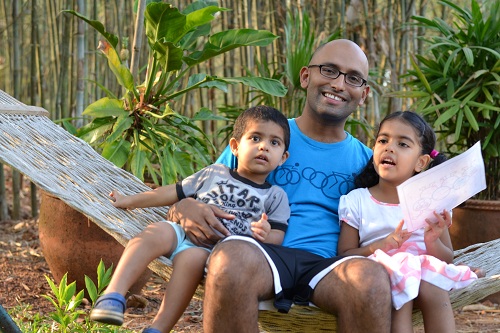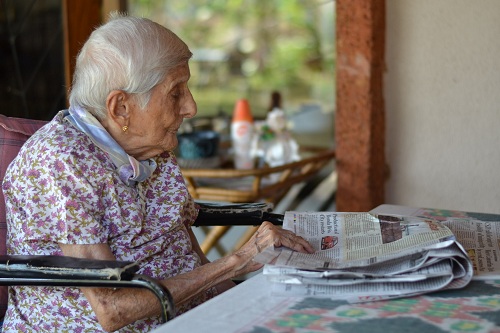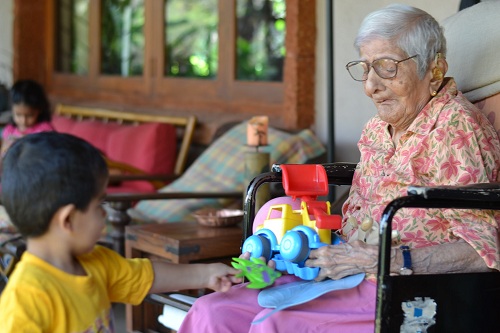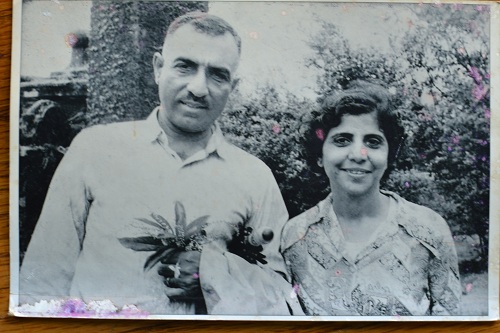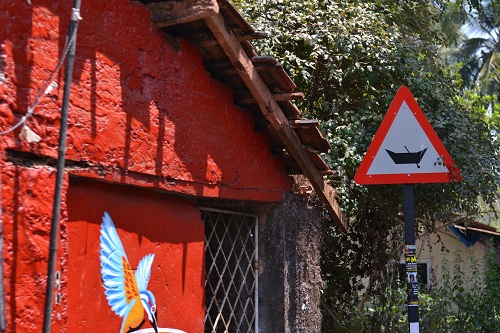Each month, a group of us nomadic families participate in a writing project where we share our ideas on a specific topic. We’ve been chatting about how we respond to people who tell us “I’m so jealous” or “I wish our family could do that” and realized that our answers may be of interest to a wider audience. So March’s writing project is “Anyone Can Travel, All you Have to Do is…”
Let me start by saying not every family should travel. If you can’t handle crowds, if you can’t stand the surprise of a wrongly advertised hotel room, or refuse to go anywhere without a seatbelt, then perhaps extended travel is not for your family. Then again, maybe your family should travel and get a different perspective.
My thoughts are more for those families that know they want to take off on a long adventure but don’t think they can. We reckon that most families resist pulling the trigger because they fear letting go of a life they’ve worked so hard to build. I want to share what were the hardest things for us to let go of, why we did it and what it all means five months into our journey.
Letting go of responsibility
Sandeep and I are the quintessential Asian couple. We followed the path that was expected of us. We got good grades, went to top universities, found each other and settled down early, popped two babies and climbed the ladders at multi-national corporations. We did everything to set a foundation for our family and prepare for our own retirement. However, both of us had a sense of adventure and curiosity that we weren’t able to satiate through our vacations. Our first decade as professionals had flown by and at least another three stretched ahead. We wanted a break from living the life we should to live the life we want. Watching our kids grow up made us realize life goes by fast. Finding out I had multiple sclerosis made us realize that life also take turns we don’t plan. Too many of us take our responsibilities so seriously that we start forgetting the things that really matter such as health, personal connections, or introspection. Every elderly person we meet on the road compliments us, saying that they have all the time now to travel but have lost either the physical ability or the family ties to make it a reality. Their advice and ours is don’t wait until retirement to travel the world. You may not be able to climb the Himalayas or swim in the bluest oceans if you do. And you certainly wont be able to experience these things with your impressionable children. By making the decision to travel, Sandeep and I actually think that we did the most responsible thing we could for our family. We’re navigating the world together and understanding each other on a level we never did at home. Most importantly we have all the time in the world to truly appreciate each other and what makes us a family. We’re not turning our backs on the conventional paths to responsibility, but travel has given us a renewed focus for why it matters.
Letting go of Parenting 101
As New York City type-A parents, we stayed in established neighborhoods, enrolled the kids in a variety of classes and even got them into private school before they could talk. We scheduled meals, nap times, gave them mostly organic foods, played lots of music and very little TV. We provided Ava and Kayan with every opportunity, but they were growing too fast for us to process any of it. It was as if we were leading separate lives, hurriedly squeezing in family time in the evenings and weekends. We wondered if taking this trip would disadvantage our kids. Some people were shocked that we would expose a one- and three-year old to the diseases of the world. So far, all these concerns seem to be routed in fear not reality. The kids have been healthier on this trip (despite licking floors and playing with the earth) than they ever were at home. When we have needed health care, such as in Kuala Lumpur, we have found it to be of higher quality service than in New York City. And despite visiting ten countries, the kids have only required one non-routine vaccine. Our family has been a single unit over the past five months and we’ve become intimately familiar with each others’ gifts and neuroses. The biggest benefit to all of this is that we as parents have an infinite platform to educate our children about our world. We’ve laid under the Indian sky teaching the kids about constellations. Ava now loves finding Orion’s belt in every new country. By the end of our trip Kayan will know a zebra, lion and rhinoceros because he saw them in the wild, not because he was shown them in a book. After three months in India the kids understand our heritage in a way they never could have at home. Our experiences on the road has brought us closer to our children and them closer to each other. Sandeep and I would like nothing more than for that do define our success as parents.
Letting go of our desks
As parents in our 30’s, we were focused on wealth accumulation and defending whatever nest egg we had already built. Letting go of a job when the global economy is unsteady may seem like a stupid move. However, let’s put things in perspective. Most of us spend at least forty years working. With retirement age expanding, that number may be closer to 50 for our generation. We’d argue that taking a year off, even in a tough economy, is a rounding error in the grand scheme of things. Moreover, by focusing on a career a few years at a time, we were missing the broader movements in our shifting world. As U.S. professionals spending time in India and China we can confidently say that our relative positions in the business world will be drastically different going forward. Traveling has given us the opportunity to experience this on the ground, and to learn from and build a network with our counterparts globally. Extended travel has also given us time to work on skills that will help us professionally. I’ve had the chance to write for Huffington Post and Conde Nast, which has pushed me to be a better communicator. Interacting with people of different cultures and socioeconomic backgrounds, and navigating through uncertain situation builds confidence as a leader regardless of profession. A doctor gains better bed side manners, an investment advisor better understands economic shifts and an educator can apply new ways of teaching and learning. Yes, we can succeed by working hard, going to the right schools and stacking years of experience. However, what differentiates leaders is their ability to consume diverse perspectives, negotiate different viewpoints, inspire and mange others through uncertain conditions and times of change. The confidence gained from maneuvering a family through multiple countries, cultures, logistics, political situations, housing conditions, health care systems, and hygiene levels will make you a stronger person, a better professional in the long run and a true leader.
Letting go of familiar grounds
We all have things that ground us – routines, personal and professional networks, families. It’s daunting to let go of these things to face the unknowns that come with long term travel. What we have found is that by figuring our new comforts and routines as we go, we have become better people and a tighter family. The four of us depend on each other a lot more than we did at home. Yes, little annoyances become magnified under these conditions, but small accomplishments are also jointly celebrated. Sandeep and I are forced to deal 24 hours a day with the things that irritate us about each other. It was a hard adjustment at first, but we are more honest with each other as a result. Kayan first two-foot jump was on the beach in Penang and all four us were there to cheer. Because Ava has seen the extremes of open sewers and pristine mountains, she knows not to litter or to pluck flowers. The kids know how a chicken is raised, how fish are caught and that fruits and vegetables come from the ground and not grocery shelves. They could have been taught all this at home, but they have lived it on the road. We do miss our friends and family, but in this digital age we’re not too far behind on each others’ lives. Many of our friends and family love to travel as much as we do and have people visiting us in seven different countries. That gives us a chance to become closer to them as well.
What you gain…
Once we hit the road we immediately realized that we traded in our full lives for richer ones. Instead of setting our alarms to get to work, we set it for things like giving alms to 12,000 monks in Chiang Mai. Instead of limited family time, we have the luxury of lazing together. We’re not saying life on the road is perfect or that we never miss certain comforts of home. Sometimes things don’t work. Other times we just can’t get what we want – the only available diaper brand leaks, the coffee is not strong enough, no one speaks English, nothing on the menu is gluten-free – but we adjust as a family. We spend every day now learning about our world with our children. We’re more connected to each other but also realize how connected we are to the rest of mankind and our natural world. We knew this on a superficial level before our journey and live it every day now. We are learning what it means to be responsible and adaptable global citizens.
Do you dream about extended travel? What prevents you from letting go?Read what other traveling families have to say about realizing their nomadic dreams.
Anyone Can Travel by Bohemian Travelers
Diet Shouldn’t Stop You from Traveling by Livin’ On the Road
Not Everyone Can Travel by Living Outside of the Box
Only the Very Special, Lucky, Rich, and Perfect (Like Me) Can Travel by Nomadic Family
Anyone Can Travel Why Don’t You by Walkington Travels
Anyone Can Do This by Experiential Family
Not Everyone Can Travel by Living Outside of the Box
You Have to be Special Like us if You Want an Awesome Life by Discover Share Inspire
True Story: Single mother from Bushwick, Brooklyn, funds long-term trip without having to sell a kidney by Break Out of Bushwick
You Can Make it Happen Too by Growing Grace Life
Why Anyone Can Travel by Family Trek
Travel – Possible? by Wandering Photographer
Even Solo Mamas on Government Handouts Can Travel by Solo Mama Travels
A Family Travel Lifestyle is More than Just Luck by Little Aussie Travellers
Anyone Can Travel Can’t They by New Life on the Road













